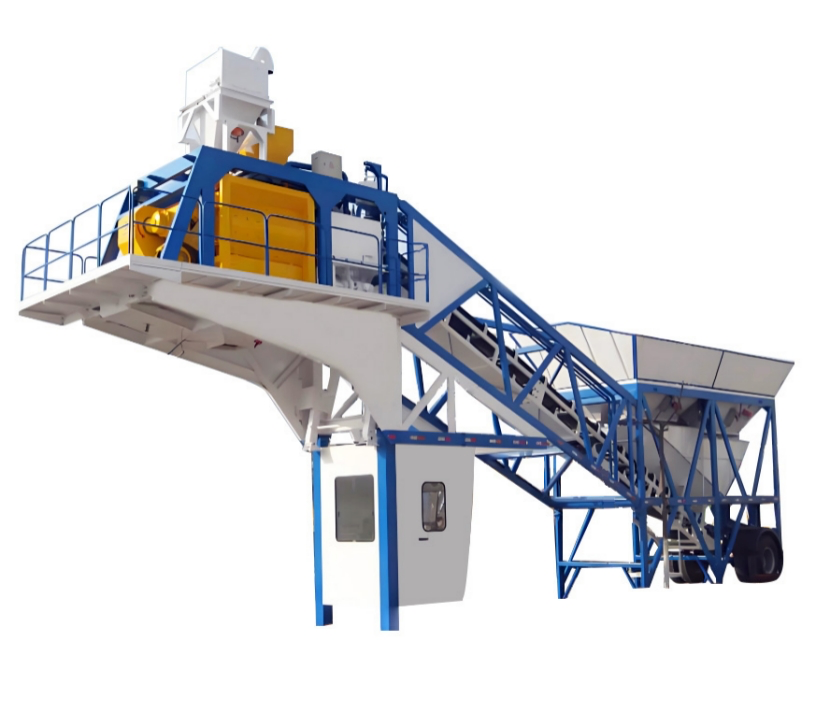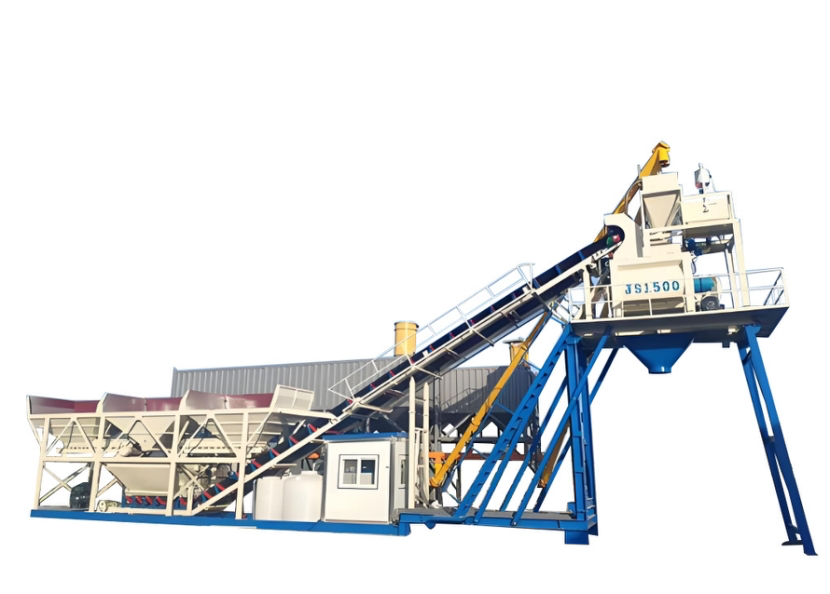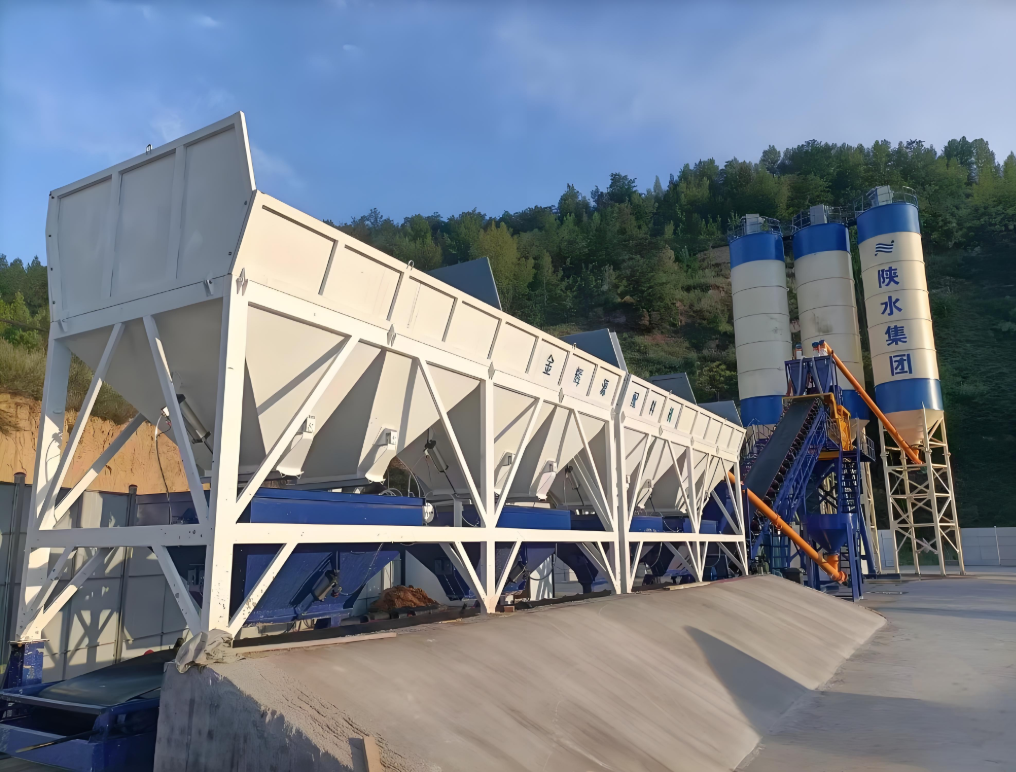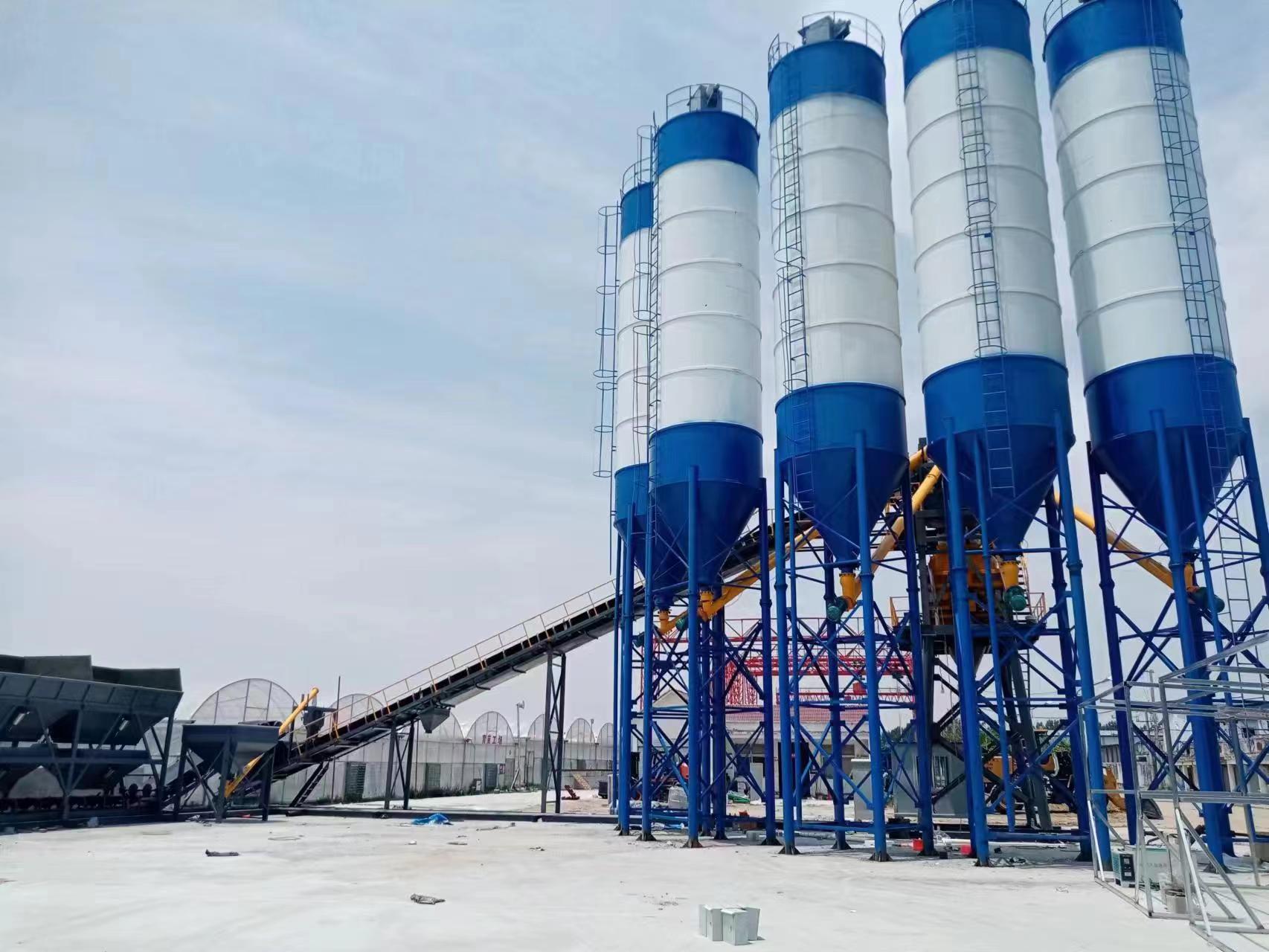With the continuous advancement of urban modernization, the demand for concrete is increasing day by day. Concrete production equipment - concrete mixing stations are becoming more and more popular in major projects. More and more people are engaged in this industry. This article combines the guidance given by Jinhuiyuan technical engineers to summarize several common faults and treatment methods of concrete mixing station equipment, so that practitioners can solve problems in time when encountering emergencies, and minimize the bad impression caused to the company by equipment problems.
一、 Mixing station equipment
Common fault phenomena:
1. The discharge door does not operate smoothly.
2. The mixer trips.
3. The mixer makes abnormal noises, which causes the mixer host to not operate normally, directly affecting the working efficiency of the mixer.
Treatment methods:
1. Replace the proximity switch of the same model. Hydraulic unit: There is a lack of hydraulic oil in the hydraulic station, replenish the hydraulic oil, and adjust the pressure; check whether there is any accumulation of material around the discharge door, and clean it up in time.
2. Adjust the tension of the transmission belt in time; adjust the gap between the mixing knives in time, and replace the mixing knives if necessary; there should be an emergency treatment plan.
3. Check whether the protective cover is loose and whether there are any problems with the bearings in time; check whether there is any lubricating oil follow-up; whether there is any friction between the protective ring A/B.
二、Aggregate conveying equipment
Common fault phenomena:
During the belt conveyor's no-load or loaded operation, the belt may run sideways or slip when it is loaded, causing leakage and abnormal wear of the equipment, reducing the working efficiency of the commercial concrete mixing station.
Treatment method:
1. Adjust the tensioning mechanism: This method is applicable to belt operation. If the belt deviates in the same direction or runs left or right without a fixed direction, it means that the belt is loose or the tightness on both sides of the belt is different. The belt tensioning mechanism should be adjusted to ensure normal operation.
2. Adjust the roller method: It is applicable to the belt deviating at the active roller, which means that the active roller is not installed horizontally or is different from the vertical width direction of the belt. The horizontality and parallelism of the active roller should be adjusted.
3. Adjust the bracket method: It is suitable for the belt to always deviate to one side when it is unloaded. The roller bracket near the belt deviating point should be adjusted forward 1~2cm along the belt running direction, or the roller bracket on the other side should be raised by 0.5~1cm. The frame at the belt deviating point can also be appropriately raised.
4. Removal of attachments: Applicable to the case where the belt has been running for a period of time. Due to the attachments such as sand and stone attached to the surface of the roller, the diameter of the roller at that place increases, resulting in uneven force and the belt deviates. The attachments should be cleaned in time.
5. Adjustment of belt method: If the edge of the belt is severely worn, or the seams are not parallel after bonding, the tension on both sides of the belt will be uneven, which should be repaired or replaced in time.
6. Installation of self-aligning rollers and limit rollers: Installing several sets of automatic self-aligning rollers (flat rollers or groove rollers) can automatically correct the belt deviation phenomenon; adding limit rollers can be installed at the rack where the belt deviates, which can force the belt to reset.
7. Increase friction.
三、Aggregate batching equipment
Common fault phenomena:
The pneumatic door of the batching machine is not closed tightly or cannot be opened.
Solution:
Check the clearance of the pneumatic door and adjust it to a reasonable range. If the clearance is too large due to wear, it is necessary to weld a steel plate or round steel at the discharge port to make the clearance reach a reasonable value. If a foreign object is stuck in the discharge port, the foreign object should be cleaned up in time (pay attention to safety), and the filter screen in the storage bin should be checked for damage and repaired in time.
四、Powder storage and conveying equipment
Common fault phenomena:
1. The screw conveyor feeds slowly or does not feed, and the feeding time exceeds two minutes.
2. When the bulk cement truck pumps ash into the powder silo, powder comes out from the top of the silo.
Treatment methods:
1. Open the arch breaking device of the powder silo, and check whether there are lumps at the outlet of the powder silo and clean them in time.
2. Check the opening angle of the powder silo discharge butterfly valve, and open it to a reasonable position to ensure smooth discharge.
3. Check whether the blades of the screw conveyor are deformed. If deformed, they need to be removed for correction or replaced.
4. Check the filter element of the dust collector on the top of the powder silo and clean it.
5. If ash comes out from the top of the powder silo, clean the accumulated material around the safety valve on the top of the powder silo, and check the reliability of the level meter and the full material alarm device.
五、Waterway, additive equipment
Common fault phenomena:
The pump cannot start normally, the pump does not produce water or the flow rate is insufficient, the pump vibrates and makes noise.
Treatment method:
1. With the power off, use your hand to turn the cooling fan of the motor to see if it is flexible. If it cannot turn, the rotor may be stuck. Add lubricating grease after removing foreign matter.
2. If the pump does not produce water, it may be that the motor is in the opposite direction. At this time, the pump should be stopped immediately. Replacing any two phases of the three-phase power supply can change the direction of rotation of the pump.
3. The centrifugal pump does not produce water after it rotates. If the pump rotates normally but does not produce water, the possible reasons are: the suction port is blocked by debris, which should be removed and a filter device should be installed; the suction pipe or instrument leaks, which may be caused by weld leakage, sand holes or cracks in the pipe, and poor sealing of the gasket at the joint.
4. Abnormal sound or excessive vibration. The reasons may be: the impeller balance is not calibrated, which should be corrected immediately; the pump shaft and the motor shaft are not concentric, which should be corrected; the pump inhales foreign matter, blocks or damages the impeller, and the pump should be stopped for cleaning.
六、Air circuit equipment
Common fault phenomena:
Air compressor failure, pressure reducing valve failure, pipeline failure, compressed air processing components, accessories failure and air source actuator failure, etc.
Treatment method:
1. When the air compressor is running, the pressure rises slowly, which may be caused by damage to the intake valve, blockage of the air filter, breakage of the pressure regulating spring or rupture of the diaphragm, and should be replaced in time.
2. The air leakage phenomenon is determined by the sound of the air leakage. Check the pipe joints, air pipes, compressed air treatment components, and actuators, and replace them in time.
3. The oil dripping of the pneumatic triplex is very small, which may be caused by blockage of the oil volume regulating valve, damage of the sealing ring, or excessive viscosity of the oil. The channel of the pneumatic actuator should be cleaned, and the sealing ring and lubricating oil with lower viscosity should be replaced.
4. The output force of the pneumatic actuator (cylinder) is insufficient and the action is unstable, which may be caused by damage to the oil supply and seals. Check the lubricating oil circuit and replace the components in time.
The above is Jinhuiyuan’s summary of several common faults and treatment methods of concrete mixing station equipment. We hope that it can play a positive role in future actual production. In addition, Jinhuiyuan is a manufacturer with a long history. Since its establishment, it has always used advanced and reasonable design and manufacturing, professional teams, and rigorous management to strive to create high-quality products that meet market demand. While providing high-quality products, Jinhuiyuan will also provide users with professional engineers and experienced maintenance personnel to be responsible for on-site equipment installation, commissioning and other work tasks. At the same time, Jinhuiyuan will also provide customers with professional operation and maintenance training to help customers train a group of professional production teams. For more details, please log in to the Jinhuiyuan Machinery website for online consultation, or visit the factory for an on-site visit and inspection!















